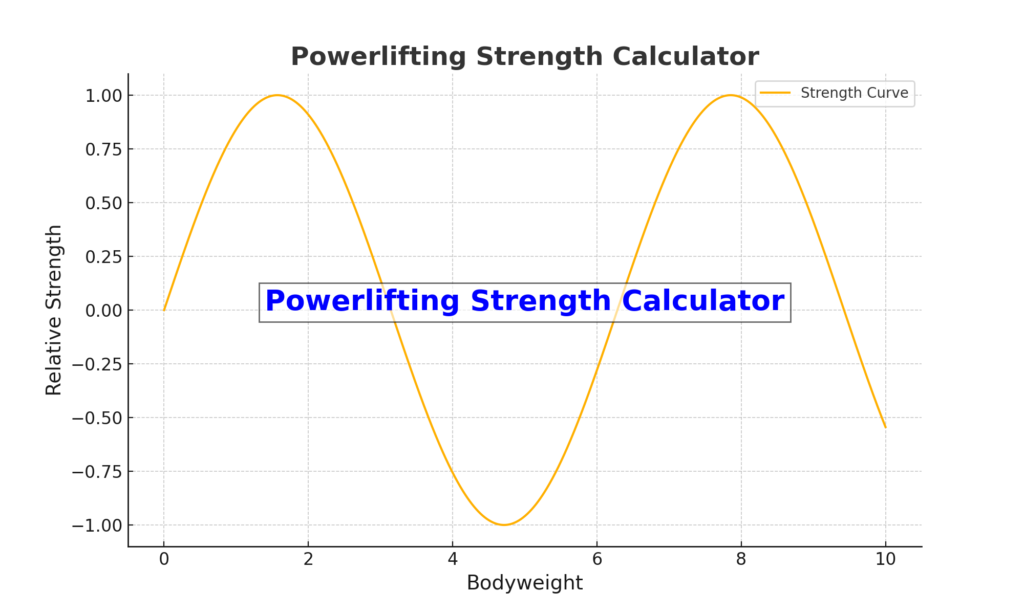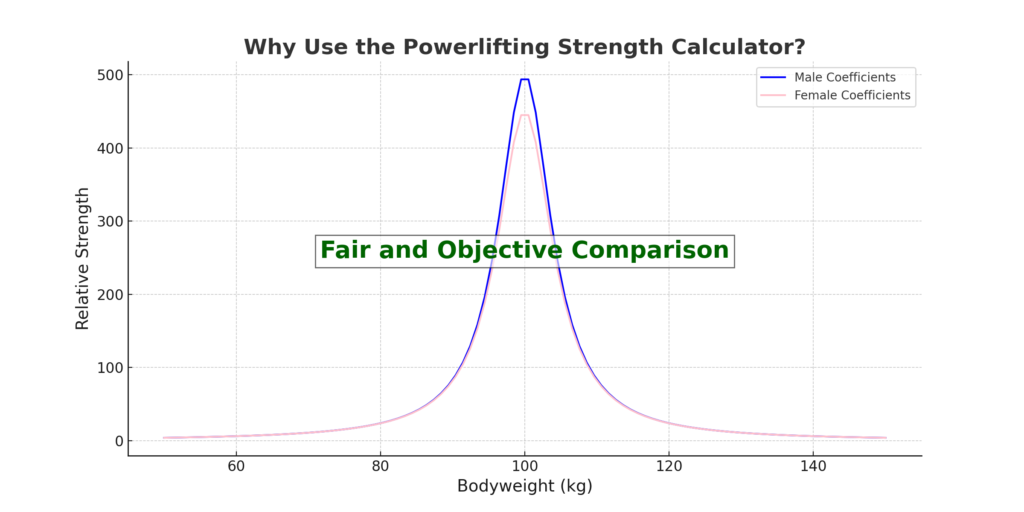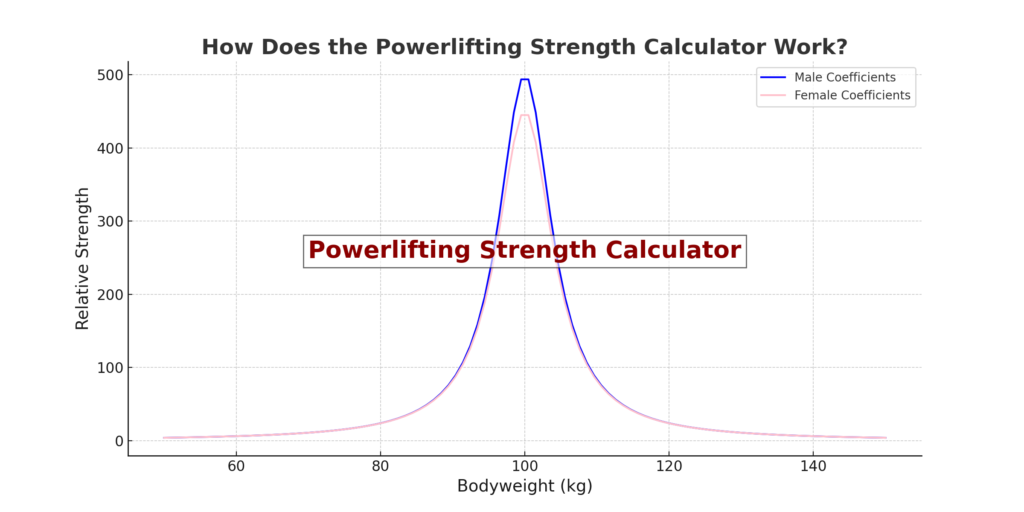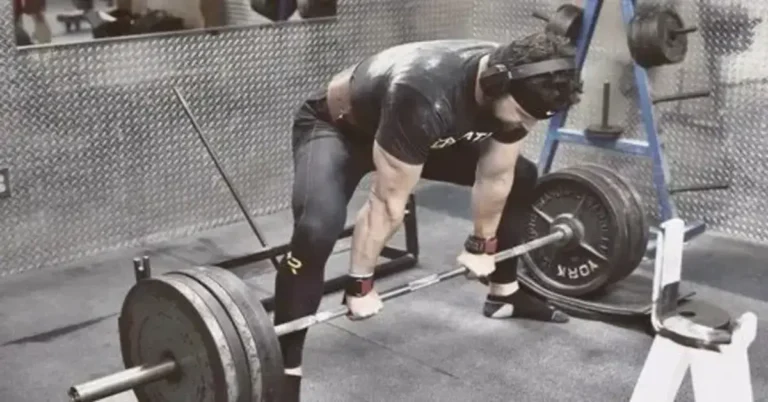Powerlifting is a sport that measures a lifter’s maximum strength in three key lifts: the squat, bench press, and deadlift. For those involved in the sport, comparing strength levels across different body weights can be challenging. This is where the Powerlifting Strength Calculator, specifically the DOTS (Dynamic Objective Strength) calculator, comes into play. This guide will help you understand what the Powerlifting Strength Calculator is, how it works, and why it is essential for fair competition in powerlifting.

What is the Powerlifting Strength Calculator?
The Powerlifting Strength Calculator, commonly referred to as the DOTS calculator, is a tool designed to assess a lifter’s relative strength. It factors in the lifter’s body weight, the total Weight lifted, and gender to provide a score that enables fair comparisons across different weight classes and genders. This scoring system levels the playing field, making it possible to compare the performance of lifters of varying sizes accurately.
Why Use the Powerlifting Strength Calculator?

In powerlifting, directly comparing lifters based on the total Weight lifted can be misleading. A heavier lifter naturally can lift more Weight than a lighter lifter. The Powerlifting Strength Calculator addresses this issue by considering the lifter’s body weight and gender, offering a more accurate measure of strength. This ensures competitions are fairer and more inclusive, allowing all participants to be evaluated on a level playing field.
How Does the Powerlifting Strength Calculator Work?

The Powerlifting Strength Calculator employs specific mathematical formulas that incorporate body weight, total Weight lifted, and gender. Here’s a detailed breakdown of how it works:
- Input the Unit of Measurement: Choose between kilograms or pounds, depending on the standard used in the lifter’s region or competition.
- Specify the Gender: Select male or female, as this affects the coefficients used in the calculation.
- Enter the Bodyweight: Input the lifter’s body weight in the chosen unit of measurement.
- Enter the Total Weight Lifted: Provide the sum of the best successful lifts in the squat, bench press, and deadlift during a competition.
The DOTS Formula
The DOTS formula differs for male and female lifters in terms of physiological differences. The formula for calculating the DOTS score is as follows:
For males: DOTS=Total Weight Lifted×500a+b×Bodyweight+c×Bodyweight2+d×Bodyweight3+e×Bodyweight4+f×Bodyweight5text{DOTS} = frac{text{Total Weight Lifted} times 500}{a + b times text{Bodyweight} + c times text{Bodyweight}^2 + d times text{Bodyweight}^3 + e times text{Bodyweight}^4 + f times text{Bodyweight}^5}DOTS=a+b×Bodyweight+c×Bodyweight2+d×Bodyweight3+e×Bodyweight4+f×Bodyweight5Total Weight Lifted×500
For females
, DOTS the coefficients (a, b, c, d, e, f) are different. These coefficients are derived from extensive statistical analysis of lifter performances to ensure fairness and accuracy.
Example Calculation
To better understand the Powerlifting Strength Calculator, let’s go through an example:
Example of a Male Lifter:
- Unit: Kilograms
- Gender: Male
- Bodyweight: 90 kg
- Total Weight Lifted: 700 kg
Suppose the coefficients for males are as follows (hypothetical values for illustration):
- a=−500.0a = -500.0a=−500.0
- b=80.632b = 80.632b=80.632
- c=−0.387c = -0.387c=−0.387
- d=0.000856d = 0.000856d=0.000856
- e=−0.000001e = -0.000001e=−0.000001
- f=0.000000001f = 0.000000001f=0.000000001
Plugging these values into the formula: DOTS=700×500−500+80.632×90−0.387×902+0.000856×903−0.000001×904+0.000000001×905text{DOTS} = frac{700 times 500}{-500 + 80.632 times 90 – 0.387 times 90^2 + 0.000856 times 90^3 – 0.000001 times 90^4 + 0.000000001 times 90^5}DOTS=−500+80.632×90−0.387×902+0.000856×903−0.000001×904+0.000000001×905700×500
Step-by-step calculation: DOTS=350000−500+7256.88−3136.77+622.944−65.61+0.006561text{DOTS} = frac{350000}{-500 + 7256.88 – 3136.77 + 622.944 – 65.61 + 0.006561}DOTS=−500+7256.88−3136.77+622.944−65.61+0.006561350000 DOTS=3500004177.45text{DOTS} = frac{350000}{4177.45}DOTS=4177.45350000 DOTS=83.78text{DOTS} = 83.78DOTS=83.78
The male lifter has a DOTS score of 83.78.
Importance of Accurate Measurement

For the Powerlifting Strength Calculator to provide a fair and meaningful score, accurate measurement of body weight and the total weight lifted is crucial. Even small inaccuracies can significantly affect the outcome, leading to unfair comparisons.
Benefits of Using the Powerlifting Strength Calculator
- Fair Competition: Levels the playing field across different weight classes and genders.
- Objective Comparison: Allows for objective comparison of lifters based on relative strength.
- Motivation and Goal Setting: Helps lifters set realistic and challenging goals.
Conclusion
The Powerlifting Strength Calculator is an invaluable tool in the powerlifting community, promoting fair competition and objective comparison. Taking into account the lifter’s body weight and gender provides a more accurate measure of strength performance, ensuring all lifters can compete on a level playing field. Whether you are a competitor, coach, or enthusiast, understanding and utilizing the Powerlifting Strength Calculator is essential for tracking progress, setting goals, and achieving success in powerlifting.
For more detailed information and to use the calculator, visit Powerlifting Strength Calculator.






